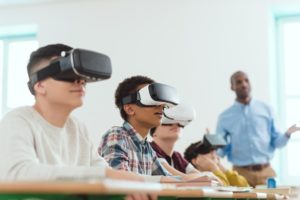Virtual reality may prevent effective formation of visual memories
 The new study specifically focused on the visual memory retention differences between active and passive VR. Active VR is when a head-mounted display (HMD) responds to subjective movements, allowing users to subjectively investigate an environment from different visual perspectives. Passive viewing, on the other hand, is when a HMD offers a single locked-off view, irrespective of a user’s head movements.
The new study specifically focused on the visual memory retention differences between active and passive VR. Active VR is when a head-mounted display (HMD) responds to subjective movements, allowing users to subjectively investigate an environment from different visual perspectives. Passive viewing, on the other hand, is when a HMD offers a single locked-off view, irrespective of a user’s head movements.
The experiment consisted of 40 subjects, split evenly between active and passive viewing conditions. Each subject watched a video set in a museum where they were presented with 10 paintings from Peter Paul Rubens, and 10 paintings from Nicolas Poussin, two well-known baroque artists. Immediately after viewing the film, and two weeks later, all subjects completed a series of memory tests.
Interestingly, while the memory test results from both active and passive groups were similar immediately following the viewing, two weeks later the results in the active group had diminished while the passive group's memories remained strong. The implication of the study is active VR viewing somewhat degrades a person’s ability to form strong visual memories.
The study did not measure how much time the active viewing subjects spent looking at the paintings.
Another hypothesis is that the enhanced immersion in active VR presents the brain with a greater cognitive load, ultimately inhibiting effective visual memory formation.
See the full story here: https://newatlas.com/vr/virtual-reality-prevent-effective-formation-visual-memories/
Pages
- About Philip Lelyveld
- Mark and Addie Lelyveld Biographies
- Presentations and articles
- Tufts Alumni Bio